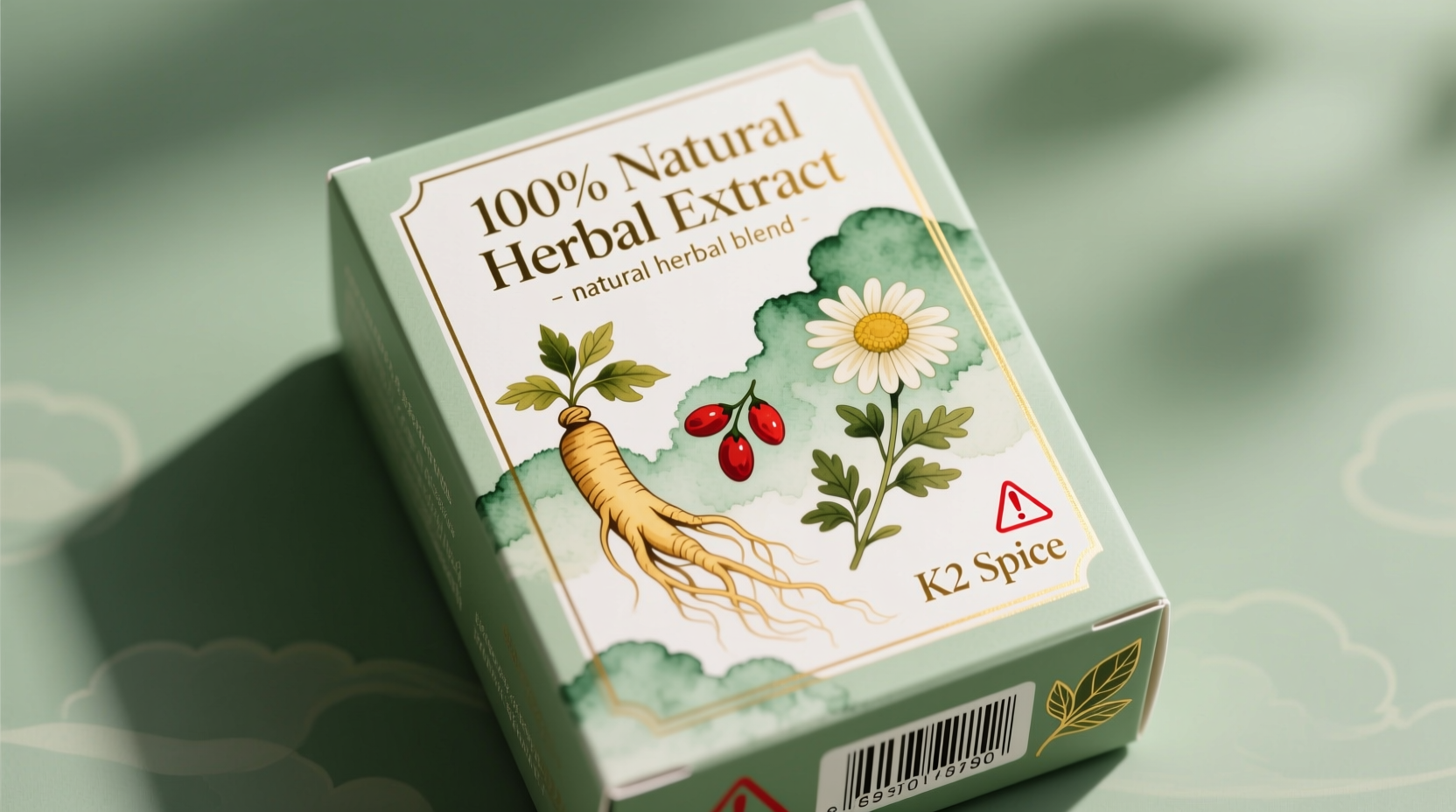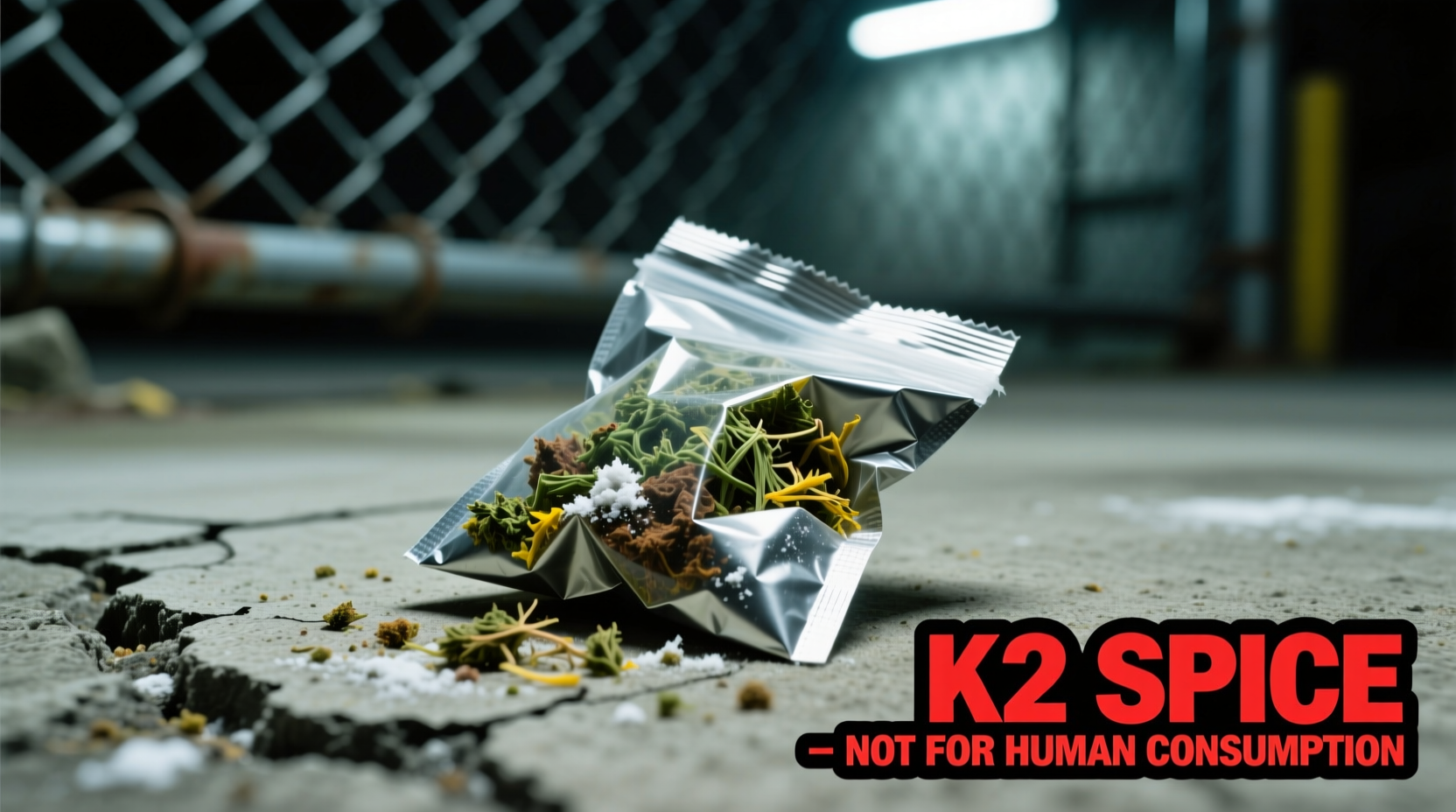Understanding K2: More Than Just a Misleading Name
Despite its "spice" moniker, K2 bears no relation to culinary spices or natural cannabis. These human-made compounds were initially developed in research laboratories during the 1980s to study cannabinoid receptors. Drug manufacturers later repurposed these chemicals, spraying them onto dried herbs to create products marketed as "legal marijuana alternatives." The chemical structures constantly evolve as producers modify formulas to circumvent legal restrictions, making each batch potentially more dangerous than the last.
According to the Centers for Disease Control and Prevention, synthetic cannabinoid use accounted for over 11,000 emergency department visits in 2022 alone. The National Institute on Drug Abuse reports that K2 compounds can be up to 100 times more potent than natural THC, binding more completely to brain receptors and triggering severe physiological responses.

K2 vs. Natural Cannabis: Critical Differences You Must Know
| Characteristic | Synthetic Cannabinoids (K2) | Natural Cannabis |
|---|---|---|
| Chemical Composition | Unregulated laboratory compounds (JWH-018, AM-2201, etc.) | Naturally occurring cannabinoids (THC, CBD) |
| Potency | Up to 100x more potent than THC | Predictable potency ranges |
| Health Effects | Severe psychosis, seizures, heart attacks, kidney damage | Generally milder effects, lower risk profile |
| Medical Applications | None approved by FDA | Approved for nausea, pain, epilepsy |
| Legal Status | Banned in most jurisdictions but constantly reformulated | Varies by state/country, increasingly legalized |
The Dangerous Evolution: How K2 Became a Public Health Threat
The timeline of synthetic cannabinoids reveals a disturbing pattern of evasion and increasing danger:
- 1980s-1990s: Academic researchers develop synthetic cannabinoids for scientific study of the endocannabinoid system
- Early 2000s: Compounds appear in "herbal incense" products marketed as legal alternatives
- 2008-2010: First wave of emergency room visits and deaths reported across Europe and North America
- 2011-2013: DEA issues temporary bans on common compounds (JWH-018, JWH-073), triggering new chemical variants
- 2014-Present: Over 150 different synthetic cannabinoid variants identified, each potentially more dangerous than predecessors
The Drug Enforcement Administration's Special Notice on Synthetic Cannabinoids documents how manufacturers systematically alter molecular structures to create new compounds that remain temporarily legal while producing increasingly severe health consequences.
Recognizing K2 Exposure: Critical Warning Signs
Synthetic cannabinoid effects often appear within minutes and can include:
- Extreme agitation or violent behavior
- Severe confusion and hallucinations
- Rapid heart rate exceeding 140 beats per minute
- Nausea and vomiting
- Seizures or tremors
- Profuse sweating with pale skin
If you suspect someone has used K2, the Substance Abuse and Mental Health Services Administration National Helpline (1-800-662-4357) provides immediate guidance. In cases of severe reaction (chest pain, difficulty breathing, seizures), call emergency services immediately - these require urgent medical attention.
Legal Landscape: Why Regulation Remains Challenging
Federal law classifies many synthetic cannabinoids as Schedule I substances under the Synthetic Drug Abuse Prevention Act of 2012. However, manufacturers circumvent these regulations through:
- Molecular tweaking: Altering one chemical bond creates a technically new compound
- Online sales: Operating through international websites beyond U.S. jurisdiction
- Mislabeling: Marketing products as "not for human consumption" to avoid regulation
The New Jersey Office of the Attorney General reports that law enforcement seized over 200 unique synthetic cannabinoid variants in 2023, demonstrating the ongoing challenge of regulating these ever-evolving substances.
Myth vs. Reality: Debunking Common Misconceptions
Myth: "K2 is just like natural marijuana but legal."
Reality: Synthetic cannabinoids interact with brain receptors differently than natural THC, often producing extreme and dangerous effects not seen with cannabis.
Myth: "It won't show up on drug tests."
Reality: While standard tests may not detect newer variants, specialized tests can identify many synthetic cannabinoids, and their metabolites remain in the system longer than natural THC.
Myth: "It's safe because it's sold in gas stations and smoke shops."
Reality: The FDA has issued multiple warnings about these products, noting they contain dangerous chemicals with no quality control or safety testing.











 浙公网安备
33010002000092号
浙公网安备
33010002000092号 浙B2-20120091-4
浙B2-20120091-4